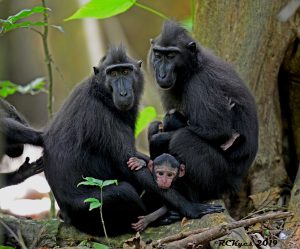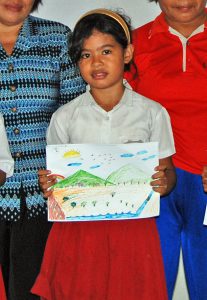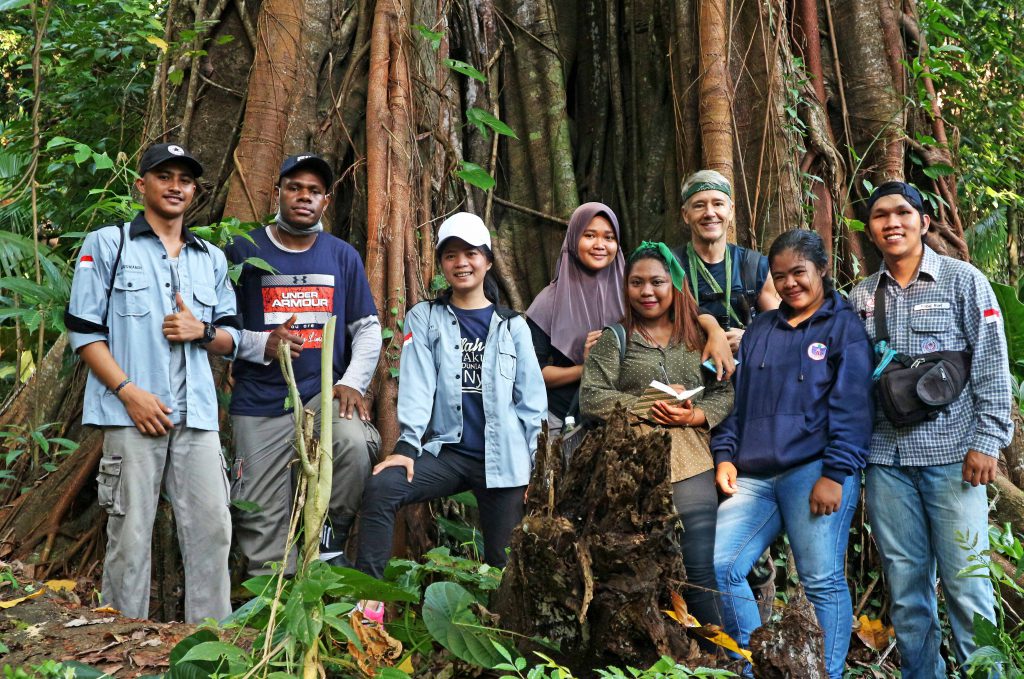By Chris Braunger | Communications Manager | WaNPRC
For Dr. Randy Kyes and his colleagues at Sam Ratulangi University (UNSRAT) and the Primate Research Center at Bogor Agricultural University (PSSP-IPB), it is been a year of milestones – two decades in the making.
Dr. Kyes, a professor in the department of Psychology at the University of Washington (UW) and director of the Center for Global Field Study, and head of the Division of Global Programs at the Washington National Primate Research Center (WaNPRC) at the has spent 30 years conducting collaborative field research and education programs around the world. The focus of his international efforts involves promoting the healthy coexistence between humans and wildlife, with particular attention to nonhuman primates. In pursuit of this mission, Kyes, along with his international colleagues, conduct broad-based research projects while providing field courses for local university students and professionals, and conducting outreach education programs for school children K-12.
A shining example of his international collaboration is the long-standing field course and outreach education program at the Tangkoko Nature Reserve in North Sulawesi, Indonesia conducted annually with colleagues from UNSRAT, a local university in the region, and from PSSP-IPB in Bogor, West Java. In May of 2019, they completed their 22nd annual “Field Course in Conservation Biology & Global Health” and their 20th annual outreach education program.
“Our outreach education program and field course go hand in hand. We conducted our first outreach program in Tangkoko back in 2000, a couple years after we had started the annual field course. That first year consisted of a program involving the adults from Batu Putih, a local village that boarders the Reserve. The discussion focused on issues relating to the critically endangered Sulawesi black macaque monkeys (Macaca nigra) in  the reserve, e.g., the need for conservation, their role in local ecotourism, and how to manage the increasing conflict such as crop-raiding. We also addressed the unsustainable practice of hunting the monkeys as food/delicacy for special events, a long-standing cultural practice in the region. I remember very clearly one of the village leaders politely thanking us for the program and acknowledging the impact hunting was having on the monkey population. He went on to say that we are “set in our ways’ and it’s is difficult to change. He then offered, “Why don’t you do another outreach program next year for our children, talk with them before they are set in their ways and help them appreciate the need to protect these monkeys?” That next year (2001), during our annual field course, we conducted our outreach education program with the school children from Batu Putih – and we have done so ever since.”
the reserve, e.g., the need for conservation, their role in local ecotourism, and how to manage the increasing conflict such as crop-raiding. We also addressed the unsustainable practice of hunting the monkeys as food/delicacy for special events, a long-standing cultural practice in the region. I remember very clearly one of the village leaders politely thanking us for the program and acknowledging the impact hunting was having on the monkey population. He went on to say that we are “set in our ways’ and it’s is difficult to change. He then offered, “Why don’t you do another outreach program next year for our children, talk with them before they are set in their ways and help them appreciate the need to protect these monkeys?” That next year (2001), during our annual field course, we conducted our outreach education program with the school children from Batu Putih – and we have done so ever since.”
Each year, third graders from two elementary schools in the village attend the outreach education program. The program objectives are to promote environmental awareness, highlight the relationship between environmental health and global health, and generate a sense of commitment to the conservation of biodiversity in the region. The program takes place over half a day and is conducted at their field station in the Reserve. The children walk about 30 minutes from their village to the field station giving them a true sense of the words “field trip.” Field course participants are the “hosts” of the program and are responsible for conducting most of the activities following Kyes and his colleagues’ established format that includes a slide presentation focusing on conservation and global health that highlights local species like the Sulawesi black macaque, an art contest with the theme: promoting good conservation practices, and a small reception for students and teachers including presentation of the art contest awards. The experience of organizing and conducting an outreach education program is intended to give the field course participants the knowledge and confidence to conduct future outreach programs on their own.
More than 900 children have participated in the outreach program since 2001, which is an impressive accomplishment in and of itself. But there is another interesting development that Kyes and his colleagues have been observing for the past several years. It is one they consider to be an even more significant reflection of their efforts. A growing number of the children who were impacted by the early outreach programs have grown up to become participants in the annual Tangkoko field course as young adults.
Kyes discusses the first time this happened: “We were nearing the end of our 13th annual field course in May 2010. We had 10 participants that year including seven university students, one park ranger, and two young women from Batu Putih. I was giving my lecture on community outreach education and providing an overview of the outreach activities we would be conducting at our field station the next day for the local children. As I was concluding the lecture, the two young women from Batu Putih said to me, “We remember the outreach program you did for us when we were in elementary school.” I was stunned… As it turned out, when these two women, Fero and Veronica, were third graders (in 2001), they participated in our very first outreach education program with the local elementary school in Batu Putih. They remembered details of the outreach program, in particular, the conservation art contest. In fact, Veronica received third place in the contest for her drawing of a red-knobbed hornbill. This trend of past outreach students now joining the field course as young adults has been continuing each year.”
To date, 21 young adults from Batu Putih who participated in the early outreach programs have gone on to take the field course. A number of these individuals are now pursuing undergraduate degrees at local universities with plans of returning to Batu Putih to assist with reserve management and ecotourism. Some have even become local conservationists, working with local NGOs and serving as tour guides in Tangkoko. “Knowing the mark this program has left on these young people and how they have continued their commitment to conservation into adulthood reaffirms for me the importance of sustained, long-term outreach education” says Kyes. He also is quick to add that an underlying bases for our work is and always has been that “the success of any conservation or health program depends in part on the ability of the local people to take leading roles in the conduct of those programs.” This is clearly something epitomized by their years of work.
In recent years, additional organizations have begun providing outreach education programs in and around the Tangkoko area. This is something Kyes and his colleagues a very pleased to see. “The collective benefits offered by multiple programs are can have a very positive effect on the long-term conservation of the area’s biodiversity and welfare of the people.” He suggests the results of their recently completed 20-year study (May 2009-2019) monitoring the population density the Sulawesi macaques in the core area of the Tangkoko reserve may be one such indication. Their long-term study has shown some stabilization of the core population from earlier declines. This stabilization may be due in part to an increased appreciation by the local residents (via outreach and education programs) of the importance of conserving the primates. He notes, however, that other areas of the reserve system are still showing reduced numbers of monkeys and that long-term conservation efforts are needed to ensure the sustainability of the population. “Our outreach and field course alumni will undoubtedly play key roles in this effort going forward,” says Kyes.
Footnotes and Acknowledgements:
The outreach education program developed by Kyes and his colleagues in Tangkoko has served as the model that he and his colleagues have used in their other field courses in Indonesia, Thailand, Nepal, China, Bangladesh, Mexico, India, and D.R. Congo.
In recognition of his years of work providing field training and outreach education for local residents (especially at Tangkoko), Kyes has been honored with the International Primatological Society 2004 “Lawrence Jacobsen Education Development Award” – for significant contribution to primate conservation education in Indonesia; and most recently the American Society of Primatologists 2017 “Kyes Award for Excellence in Educational Outreach.” This was the inaugural awarding of the Kyes Award.
Dr. Kyes would like to show his gratitude to:
Meis Nangoy, Jane Onibala, Indyah Wahyuni, Sylvia Laatung, Moureen Tamasoleng, Hetty Wungouw, Junius Daniel, and Umar Paputungan from the Universitas Sam Ratulangi in Manado, Indonesia (UNSRAT).
Entang Iskandar from Pusat Studi Satwa Primata – Institut Pertanian Bogor, Indonesia (PSSP-IPB).